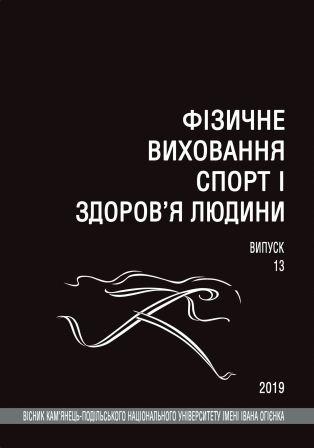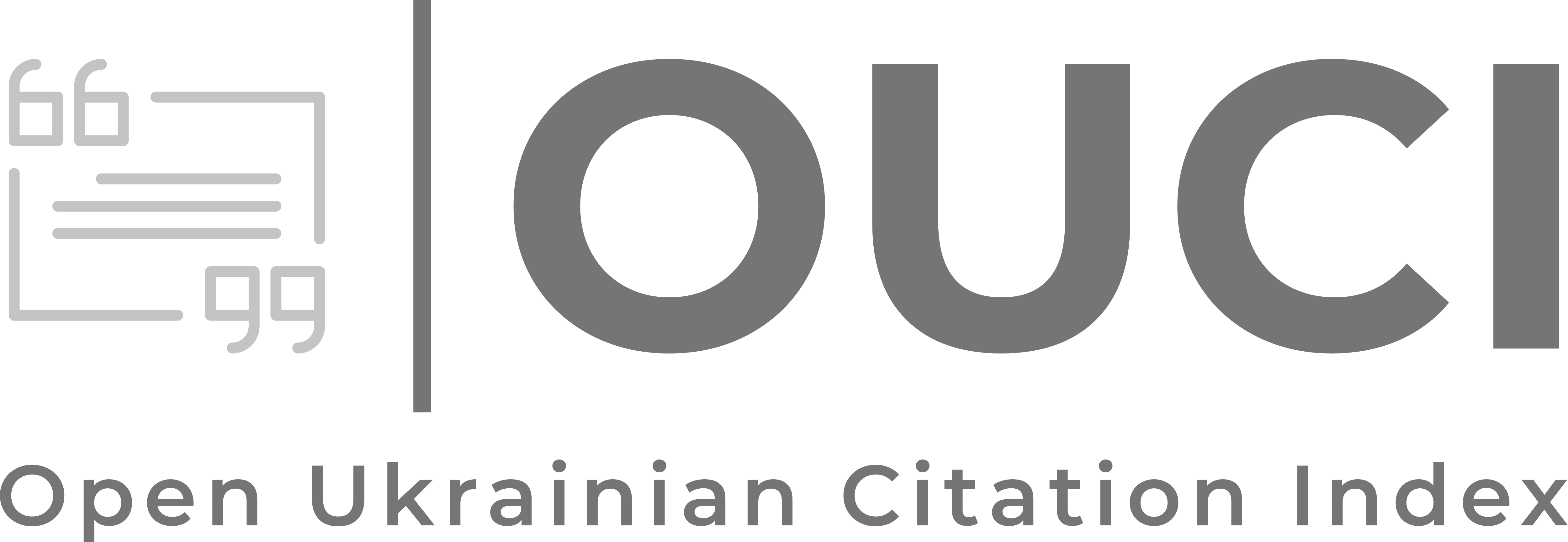EATURES OF CHANGES IN INDIVIDUAL STATES OF THE NERVOUS SYSTEM OF STUDENTS OF SPECIAL MEDICAL GROUPS IN THE PROCESS OF PHYSICAL EDUCATION
DOI:
https://doi.org/10.32626/2309-8082.2019-13.5-10Ключові слова:
student special medical group, physical education, diseases of the nervous system.Анотація
The optimal organization of physical education classes to ensure a
high level of somatic health of student youth is relevant for solving the
problems of their psychophysical readiness to perform their professional
duties. The purpose of the study: to identify the impact of physical
education classes in accordance with an individually oriented program
for students of special medical groups with diseases in the state of the
nervous system to the state of this system. Material and methods. The
participants of the experiment were 80 students of the Lviv Polytechnic
National University during a three-year physical education course. To
determine the effectiveness of a proven program of physical education
special medical group for students with diseases in the state of the
nervous system, cardiovascular tests have been used. Results. In terms
of the general objectives of the study, the experiment can be considered
quite effective. After the course of studies, we observe stabilization
with a tendency to regress vegetative disorders, improvement of
peripheral hemodynamics, against the background of reduction of
clinical manifestations of diseases of the nervous system. The final
statistical analysis of the obtained control results testifies to the positive
dynamics of all the experimental parameters of the experimental
group students, the dynamics leveling within 21 %. The quality of the
studied parameters of the control group students during the physical
education course is characterized by a significantly lower positive
trend. Conclusions. The results of the three-year implementation of the
physical education of special medical groups of the physical education
program for students with diseases in the state of the nervous system
showed a significantly higher (p<0.05) effectiveness of the content in
the influence on the functional state of the nervous system, compared
with the current one. This is reflected in the significant improvement of
the studied parameters with experimental groups students compared to
control groups students.
Посилання
Adyrkhaiev SG. (2014). Psychophysical condition of visually impaired
students during physical education classes. European Scientific
Journal, 10(3): 62–69.
Anikieiev DM. (2015). Criteria of effectiveness of students’ physical
education system in higher educational establishments. Physical
education of students, 5: 3–8. doi: 10.15561/ 20755279.2015.0501.
Ayers SF. (2004). High School Students’ Physical Education Conceptual Knowledge. Research Quarterly for Exercise and Sport, 75(3):272–287. doi: 10.1080/02701367.2004. 10609160.
Вlavt О. (2016). System of control in physical education of students of
special medical groups. Lviv: Polytechnic Publishing House.
Ewing DJ., & Clarke BF. (1982). Brit. med. J., 285: 916–918.
Flec SJ. (2003). Cardiovascular adaptation to resistance training. Med.
Sci. Sports Exerc, 5(20): 151.
Iedynak G., Galamandjuk L., Kyselytsia O., Balatska L., Nakonechnyi
I., Mazur V. (2017). Physiological characteristics of pubertal
schoolchildren with chronic diseases. Journal of Physical Education
and Sport. 17(4): 2462-2466. doi:10.7752/jpes.2017.04275
Кoryahin V., Вlavt О., Bakhmat N., Guska М., Ludovyk Т., Prozar М.,
Bodnar А., Кravets S., & Bezgrebelnaya Е. (2018). Differentiated
correction of attention abilities of students with chronic diseases
during physical education. Journal of Physical Education and Sport,
(4): 2278–2283. doi: 10.7752/jpes.2018.04343.
Кoryahin V., Вlavt О ., & Grebinca G. ( 2016). Optimization of the
technical training system. Journal of Physical Education and Sport,
(2), 163: 1029-1030.




